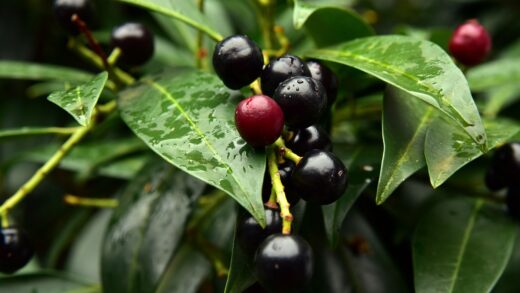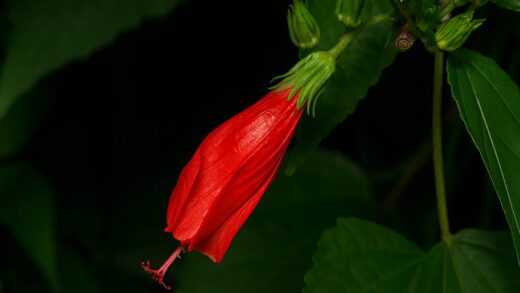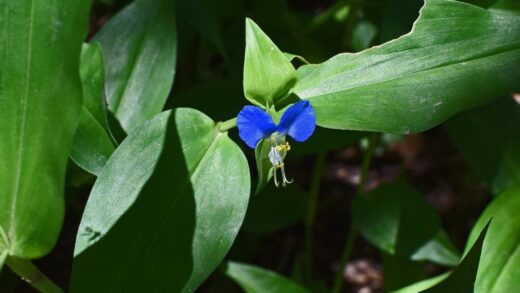The Scots pine is a remarkably resilient and iconic evergreen, valued for its distinctive orange-red bark, blue-green needles, and its ability to thrive in a wide range of conditions. Providing proper care for this species is not overly demanding, but it requires an understanding of its natural habitat and fundamental needs to ensure it develops into a healthy, structurally sound, and visually appealing specimen. This involves careful consideration of its placement within the landscape, its soil and water requirements, and a proactive approach to its long-term health. By adhering to best practices in cultivation, you can enjoy the rugged beauty of the Scots pine for many decades.
Proper care begins with appreciating the tree’s inherent characteristics and its preferences, which are shaped by its native environments across Europe and Asia. The Scots pine is a pioneer species, often colonizing open, disturbed areas with poor, sandy soils, which speaks to its adaptability. It is exceptionally hardy and tolerant of drought, wind, and cold temperatures once established, making it a suitable choice for challenging landscape situations. Understanding this background is crucial, as many common care mistakes stem from providing overly rich conditions or excessive moisture, which can be detrimental to its health. Therefore, a successful care regimen focuses on mimicking its preferred natural environment as closely as possible.
The long-term health of a Scots pine is directly linked to consistent and observant care practices throughout its life. For young trees, the focus should be on proper establishment, which includes adequate watering to develop a deep root system and protection from physical damage. As the tree matures, care shifts towards maintenance, such as monitoring for pests and diseases, performing minimal but strategic pruning, and ensuring the surrounding environment does not become overly crowded or waterlogged. This long-term perspective is essential because the decisions made in the early years of the tree’s life will significantly impact its structure, resilience, and overall longevity in the landscape.
Ultimately, the goal of caring for a Scots pine is to cultivate a tree that is not only alive but thriving, displaying the vigorous growth and unique aesthetic qualities for which the species is known. A healthy Scots pine will exhibit good needle retention, vibrant color, and steady, if not rapid, growth each year. It will be better equipped to withstand environmental stresses such as drought, extreme temperatures, and attacks from pests and diseases. By investing the time to understand and provide for its basic needs, you are not merely maintaining a plant but curating a living feature of the landscape that will provide beauty, shade, and ecological value for generations.
Introduction to Scots pine characteristics
The Scots pine is one of the most widely distributed conifers in the world, with a natural range stretching from the Iberian Peninsula and the British Isles across northern Europe and Asia to the Sea of Okhotsk. This vast distribution highlights its incredible adaptability to diverse climatic and soil conditions, a key characteristic for any gardener or land manager to understand. It typically forms an open, irregularly shaped crown as it matures, a distinct silhouette against the skyline. The needles are borne in pairs, are typically between 4 to 7 centimeters long, and have a characteristic blue-green hue that can vary slightly depending on the tree’s provenance and growing conditions.
More articles on this topic
One of the most defining features of the Scots pine is its bark, which provides year-round interest in the landscape. On the lower trunk of mature trees, the bark is thick, grey-brown, and deeply fissured, providing protection against ground fires in its natural habitat. Further up the trunk and on the upper branches, the bark becomes a very distinctive thin, flaky, and bright orange-red or coppery color. This striking contrast is a key identification feature and a significant ornamental attribute, making the tree particularly noticeable in the winter landscape when deciduous trees are bare.
Growth habit and ultimate size are also important considerations. In a forest setting, the Scots pine can grow into a tall, straight tree reaching heights of over 35 meters, with a narrow crown. However, when grown in an open, landscape setting, it tends to be shorter and develops a much broader, more picturesque crown. Its growth rate is moderate, but it is a long-lived species, with individuals capable of living for several hundred years under optimal conditions. This longevity means that decisions regarding its placement and initial care will have very long-term consequences.
The reproductive cycle of the Scots pine is another interesting aspect of its biology. It is a monoecious species, meaning both male and female cones are present on the same tree. The small, yellow male cones produce vast amounts of pollen in the spring, which is dispersed by the wind. The female cones are small and reddish-purple at pollination, developing over two years into the familiar woody, grey-brown cones that are between 3 and 8 centimeters long. These cones open to release winged seeds, which are then dispersed by the wind, allowing the species to colonize new areas effectively.
Optimal site selection and soil conditions
Choosing the correct location is the single most important step in ensuring the long-term health and success of a Scots pine. This species has an absolute requirement for full sun, meaning it needs at least six to eight hours of direct, unfiltered sunlight each day to thrive. Planting it in a shady or partially shaded location will inevitably lead to sparse foliage, poor growth, stunted development, and an increased susceptibility to fungal diseases and insect pests. Therefore, you must select an open site away from the shadow of buildings, dense tree canopies, or other tall structures.
More articles on this topic
Beyond sunlight, air circulation is another critical environmental factor for the Scots pine. Good airflow around the tree helps to keep the foliage dry, which is essential for preventing the development and spread of common fungal pathogens that thrive in damp, stagnant conditions. Planting in low-lying areas or crowded spaces where air movement is restricted should be avoided. An open, slightly elevated, or even windswept location is often ideal, as the species is well-adapted to handle wind and the exposure helps maintain needle health. This consideration is particularly important in regions with high humidity during the growing season.
The Scots pine is renowned for its tolerance of poor, infertile soils, but it has one non-negotiable requirement: excellent drainage. It cannot tolerate waterlogged or compacted heavy clay soils, which lead to root rot and the rapid decline of the tree. The ideal soil is sandy or loamy, acidic, and deep enough to allow for the development of a strong taproot. Before planting, it is crucial to assess the drainage of the chosen site. A simple test involves digging a hole about 30 centimeters deep, filling it with water, and observing how long it takes to drain; if water remains for more than a few hours, the site has poor drainage and is unsuitable without significant amendment.
When preparing a site, the goal is not to create an overly rich environment but to ensure the physical structure of the soil is appropriate. If you are dealing with heavy clay, amending the soil is necessary. This can be done by incorporating large amounts of organic matter like pine bark fines and coarse sand to improve the soil structure and porosity. It is more effective to amend a large area where the roots will grow rather than just the planting hole, as this encourages roots to spread out rather than remaining confined. The target soil pH for Scots pine is in the acidic range, ideally between 5.0 and 6.0, which should be confirmed with a soil test.
Watering regimes for health and longevity
Proper watering is crucial for the establishment of a young Scots pine, but its needs change dramatically as the tree matures. For the first one to two growing seasons after planting, the tree requires consistent and deep watering to encourage the development of an extensive root system. During this period, you should provide a thorough soaking once or twice a week, especially during dry spells. The goal is to deliver water slowly to the root zone, allowing it to penetrate deeply into the soil profile. Using a soaker hose or drip irrigation is an efficient method that minimizes water loss to evaporation.
Once a Scots pine is well-established, typically after two to three years, it becomes remarkably drought-tolerant and requires very little supplemental irrigation. Its deep taproot and extensive lateral root system are highly efficient at extracting moisture from the soil. In most temperate climates, mature trees will thrive on natural rainfall alone and should not be watered on a regular schedule. In fact, overwatering is a far more common problem for established Scots pines than underwatering, as constantly saturated soil deprives the roots of oxygen and creates ideal conditions for fungal pathogens like root rot.
Monitoring the tree and the soil conditions is more effective than adhering to a rigid watering schedule. The best way to determine if a mature tree needs water is to check the soil moisture at a depth of 15 to 20 centimeters. If the soil is dry at this depth, particularly during a prolonged and severe drought, a deep and infrequent watering may be beneficial. Signs of drought stress in a Scots pine can include a slight graying or dulling of the needle color, drooping new growth, and, in extreme cases, browning of the needle tips. However, these symptoms can also be caused by other issues, so proper diagnosis is important.
When you do need to water an established tree, the method is just as important as the frequency. It is essential to water deeply and infrequently, rather than providing light, frequent sprinklings. A deep watering encourages the roots to grow deeper into the soil, making the tree even more resilient to future droughts. Apply water slowly over the entire area under the tree’s canopy and beyond, known as the drip line. This ensures that the entire root system has access to moisture. Avoid spraying the foliage, as wet needles, especially overnight, can increase the risk of fungal diseases.
Nutrient management and fertilization strategies
The Scots pine is exceptionally well-adapted to nutrient-poor soils, and in most landscape settings, it will require little to no fertilization once established. Its ability to thrive in challenging conditions is one of its key attributes. Before considering any fertilizer application, it is highly recommended to conduct a professional soil test. This analysis will provide a detailed report on the existing nutrient levels and the soil’s pH, which is critical information. Fertilizing without a clear understanding of the soil’s composition can do more harm than good, potentially creating nutrient imbalances or causing excessive, weak growth.
If a soil test reveals a specific nutrient deficiency, or if the tree is showing clear signs of nutrient stress such as widespread yellowing of needles (chlorosis), then a targeted fertilizer application may be warranted. Scots pines generally prefer acidic soil conditions, and a common issue in neutral or alkaline soils is an iron or manganese deficiency, which typically causes yellowing of the new growth. For general nutrient needs, a slow-release fertilizer formulated for acid-loving evergreens is the most appropriate choice. Look for a product with a lower nitrogen component to avoid forcing lush, weak growth that is more susceptible to pests and winter damage.
The timing of fertilizer application is crucial for it to be effective and not cause harm. If fertilization is deemed necessary, it should be applied in the early spring, just as new growth begins to emerge. Applying fertilizer late in the summer or in the autumn is strongly discouraged, as this can stimulate new growth that will not have sufficient time to harden off before the first frost, leading to significant winter injury. A late-season nutrient boost can disrupt the tree’s natural process of preparing for dormancy, ultimately compromising its health and resilience.
When applying granular fertilizer, it is important to do so correctly to ensure the nutrients reach the root zone and do not damage the tree. The fertilizer should be spread evenly over the soil surface, starting about 30 centimeters away from the trunk and extending out to the tree’s drip line and slightly beyond. It should never be concentrated in a single ring at the base of the trunk, as this can burn the bark and roots. After application, the fertilizer should be gently raked into the top layer of soil and then watered in thoroughly to help it dissolve and move down to the roots where it can be absorbed.
Pruning for structure and aesthetic appeal
Pruning a Scots pine should be approached with a minimalist philosophy, as they generally develop a naturally attractive, albeit sometimes irregular, form without much intervention. The primary reasons to prune are to remove dead, damaged, or diseased branches, which can be done at any time of year. This type of maintenance pruning is important for the tree’s health, as it eliminates potential entry points for pests and pathogens and improves air circulation within the canopy. When making these cuts, it is crucial to cut back to a healthy branch junction or to the main trunk, being careful not to leave a stub that can decay.
For structural pruning, the goal is to correct issues like competing central leaders or poorly attached branches that could fail as the tree matures. This work is best done when the tree is young, as the wounds will be smaller and heal more quickly. If two leaders are competing for dominance, one should be subordinated or removed entirely to promote a single, strong central trunk. Pruning to improve the overall shape of the tree should be done with great care, as cutting into old wood will not stimulate new growth. Pines do not have latent buds on their old, bare wood like many deciduous trees do.
A specialized pruning technique for controlling the size and increasing the density of a Scots pine is known as “candling.” This is performed in the spring when the new growth shoots, called “candles,” are elongating but before the needles have fully expanded. By pinching or cutting back these candles by one-third to one-half of their length, you can reduce the annual growth of that branch and encourage the development of more buds for the following year. This results in a more compact and densely foliated tree, a technique often used in bonsai and for managing pines in smaller garden spaces.
The timing of pruning is critical for pines. Aside from removing dead or damaged wood, any pruning that involves cutting live branches should be done in the late winter or early spring when the tree is dormant. Pruning during this period minimizes the flow of sap, or “bleeding,” from the wounds, which can be messy and attract insect pests. Avoid pruning in the late summer or fall, as this can interfere with the tree’s preparation for winter dormancy. Always use sharp, clean pruning tools to make precise cuts that will heal efficiently.
Long-term health monitoring and preventative care
Proactive and regular monitoring is the cornerstone of maintaining a healthy Scots pine over its long lifespan. This involves making it a habit to walk around the tree and inspect it closely at different times of the year, paying attention to any changes in its appearance. Look for signs of stress such as discolored or dropping needles, sparse growth, or any unusual spots or lesions on the bark and branches. Early detection of a problem, whether it is related to disease, pests, or an environmental issue, provides the best opportunity for successful intervention before significant damage occurs.
One of the most important preventative care measures is to maintain a healthy root zone environment. This includes avoiding soil compaction around the base of the tree, which can result from heavy foot traffic or the operation of machinery. A layer of organic mulch, such as pine bark or wood chips, spread over the root zone can be highly beneficial. Mulch helps to conserve soil moisture, moderate soil temperature, suppress weeds, and, as it decomposes, adds organic matter to the soil. The mulch layer should be about 5 to 10 centimeters deep and kept several centimeters away from the trunk itself to prevent moisture buildup against the bark.
Integrated Pest Management (IPM) is a sustainable approach that should be adopted for managing potential pest issues. This strategy focuses on prevention and uses chemical controls only as a last resort. For a Scots pine, this means encouraging natural predators of common pests, such as birds and beneficial insects, by creating a diverse garden environment. If a pest like the pine sawfly or aphids is detected, physical removal or the use of less toxic horticultural oils or insecticidal soaps may be sufficient, especially if the infestation is caught early. A healthy, vigorous tree is also inherently more resistant to pest attacks.
Finally, protecting the tree from mechanical and environmental damage is a key aspect of long-term care. This includes protecting the trunk of young trees from damage by lawnmowers and string trimmers by maintaining a mulch ring. In areas with heavy snowfall, carefully brushing heavy, wet snow off the branches can prevent them from breaking under the weight. While mature Scots pines are very cold hardy, young or newly planted trees in exposed locations might benefit from a burlap screen to protect them from winter winds and sunscald. These simple, preventative actions contribute significantly to the tree’s resilience and longevity.
📷 Arnstein Rønning, CC BY 3.0, via Wikimedia Commons


















